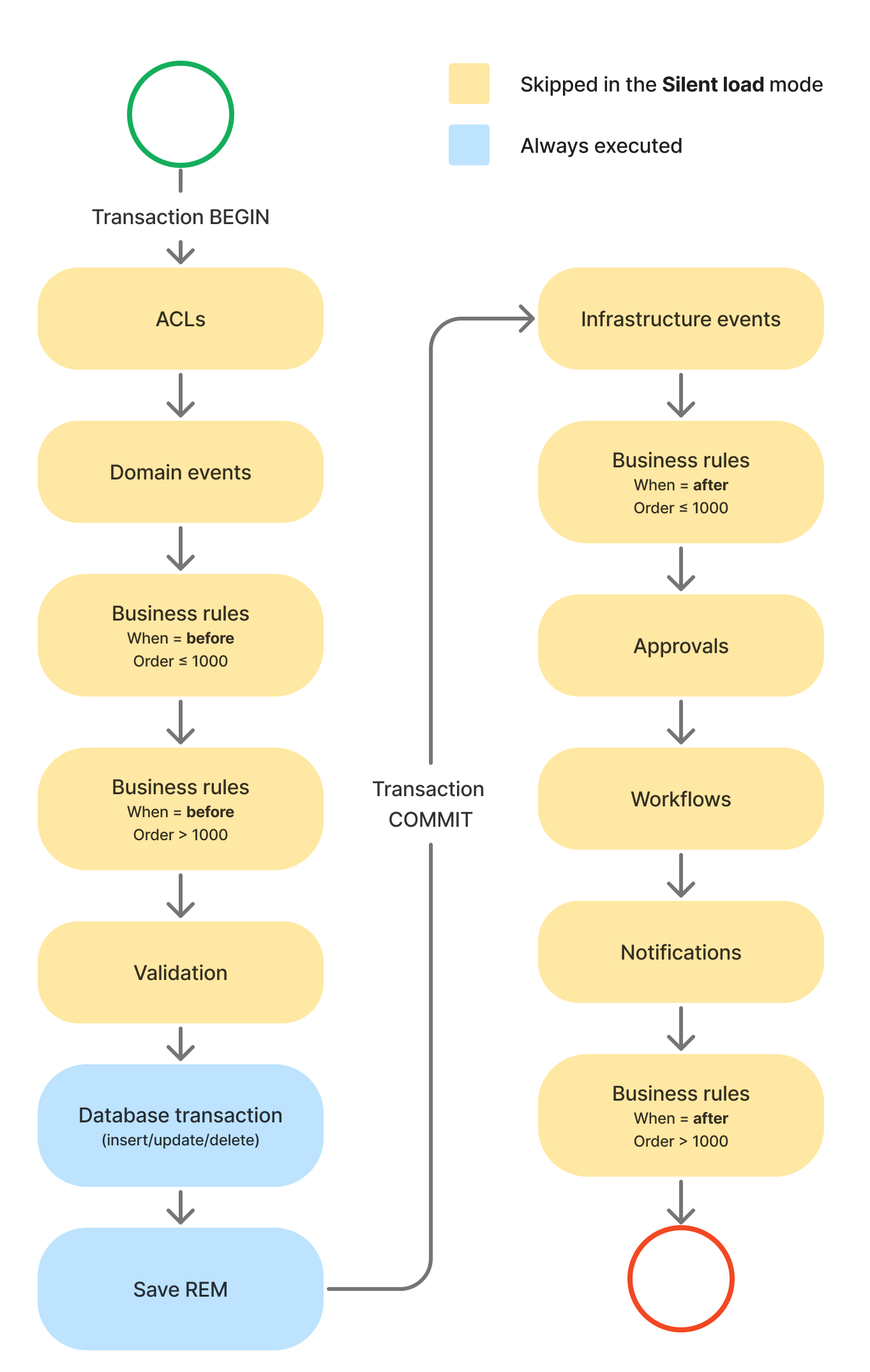In SimpleOne, the execution of business rules, workflows, notifications, and engines is bound to database operations.
The execution order is shown and descr

Before insert/update/delete
The processing of the following elements is bound to the transaction BEGIN SQL statement:
- ACLs.
- vents: filling in the Order and Number field in relevant records, adding column prefixes where appropriate.
- ss rules:
- Rules with When = before and Order ≤ 1000.
- Rules with When = before and Order > 1000.
- Validation (is skipped for delete).
- Database transaction (insert/update/delete).
- Save REM.
After insert/update/delete
The execution of the following elements is bound to the transaction COMMIT SQL statement:
- Infrastructure events (include processing of History, Activity Feed, Create VCS Records, Execute REM After Scripts).
- Engines:
- Business rules with When = after and Order ≤ 1000.
- Approvals.
- Workflows.
- Notifications.
- Business rules with When = after and Order > 1000.